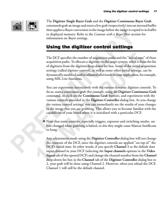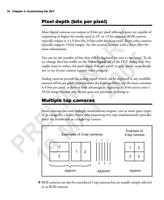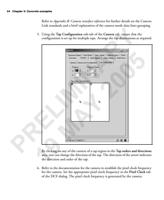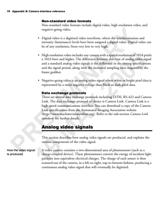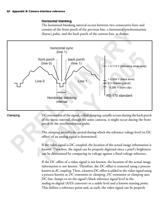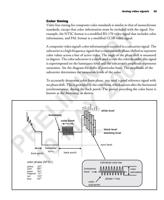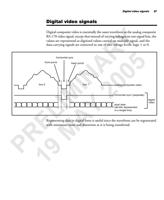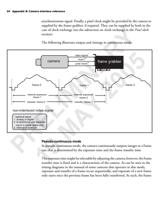
90 Appendix B: Camera interface reference
LVDS
LVDS (low voltage differential signaling) is an electrical standard used when
communicating at high speeds over wires. There are several industry standards
that define LVDS including ANSI/TIA/EIA-644 (EIA-644). EIA-644 is more
application independent and is used for more general purposes. EIA-644 provides
a high bandwidth from higher transmission speeds with low noise and power
consumption.
Y Camera Link
Camera Link is a high speed digital communication interface camera-to-frame
R grabber standard that combines low-voltage differential signal (LVDS) with serial
digital data flow. Camera Link supports various real-time signals such as
A 5 asynchronous reset, horizontal synchronization, and vertical synchronization.
IN 0 Camera Link standards
Camera Link’s connectivity standards are based on National Semiconductor’s
0 Channel Link digital data transmission technology used in frame grabbers.
Channel Link combines LVDS with serial transmission using a standardized
cabling format. The Camera Link cable specifications provide standardized
IM 2 transmission rates of up to 2.38 Gbits per second over distances of up to 10 meters
(32 feet).
L Y As a result, Camera Link data transfer in base configuration can handle 1.2Gbps
and in full configuration at 3.6 Gbps, which is faster than IEEE-1394 standards
(up to 400 Mbps). Digital cameras equipped with a Camera Link interface do not
E A require custom cables, making it more cost-efficient, as well as the cables are
smaller and more flexible than custom cables required by early digital cameras,
making them less prone to breakage and simpler to use.
R M The following is an illustration of the various Camera Link configurations (base,
medium and Full) available for Camera Link cameras and how taps are divided.
P 19Each set of 8 bits (data lines, or ports) is represented by a letter, from A to H. Each

















